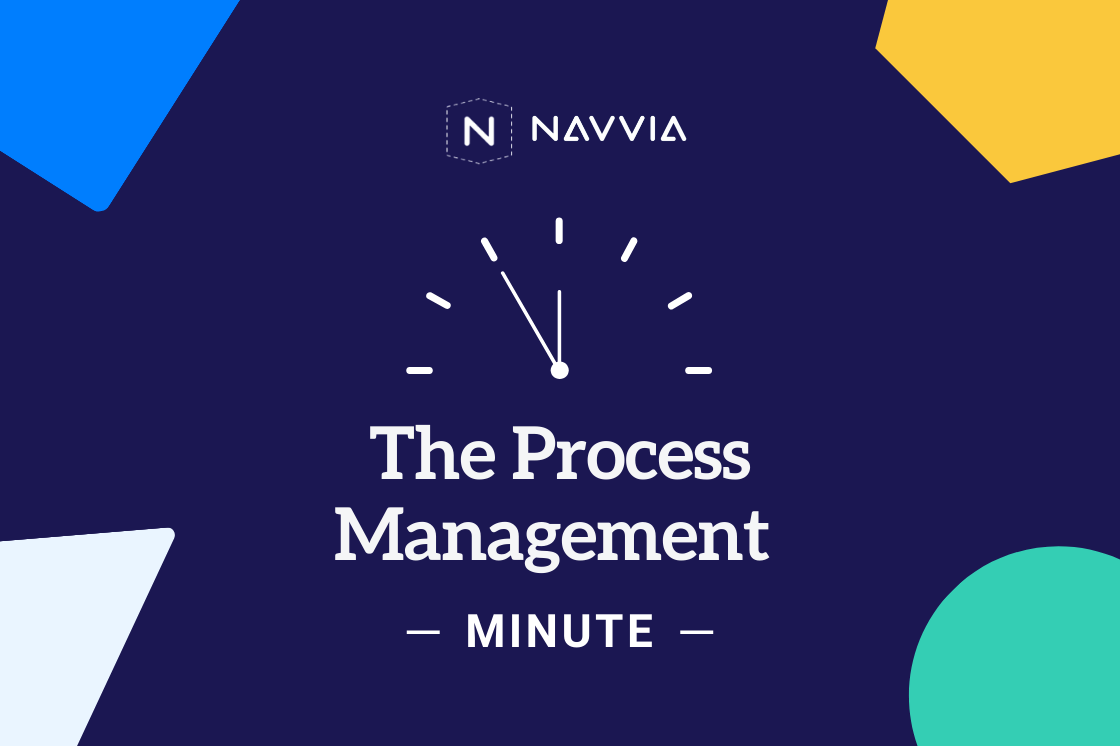5 Ways IT Service Management - ITSM Enhances IT Security
When thinking about IT security, tools like firewalls, virus scanning, and endpoint detection and response (EDR) systems often come to mind. However, it's the structure provided by information technology service management that ultimately protects your organization's assets.
Information technology service management - ITSM offers many benefits but none are more important than the security, availability, and continuity of your services.
While virtually every ITSM process contributes to IT security, it's the framework provided by an ITSM program, and supported by a Service Management Office, that lays the foundation for effective IT security.
Understanding ITSM
IT Service Management (ITSM) is an approach that Information Technology Organizations use to optimize how they design, build, implement, operate, and improve the services they deliver to their customers. ITSM combines elements of organizational structure, processes, and supporting tools to support this mandate. This approach not only enhances service delivery but also ensures that IT services are managed efficiently and effectively, contributing to the overall success of the organization.
Information Technology Security Management and Cybersecurity
The 2024 Verizon Data Breach Investigations Report (DBIR) analyzes 30,458 security incidents, including 10,626 confirmed data breaches across 94 countries. It's considered a highly influential and widely respected resource in the cybersecurity industry.
The report found that process failures and a lack of proper procedures are significant contributors to data breaches. Key findings included:
- Exploitation of Vulnerabilities: Increased significantly (180% from the previous year).
- Ransomware and Extortion: Account for 32% of breaches.
- Human Element: Continues to be a significant factor in breaches (68%).
- Third-Party Involvement: Increased significantly (68% increase), highlighting risks in software supply chains.
- Basic Web Application Attacks: The use of stolen credentials (77%) is the most common method, followed by brute force and exploit vulnerabilities.
Each of the above could be mitigated through the implementation of ITSM processes such as Information Security Management, Risk Management, Configuration Management, Service Continuity Management, and Supplier Management, to name a few.
The 2024 CloudStrike global outage was caused by a failed update to their Falcon Sensor security software. While technically not a breach, this failure in Service Validation and Testing, Release Management and Change Management has resulted in worldwide financial damage estimated to be at least US$10 billion.
Five Ways ITSM Enhances IT Security
IT Service Management (ITSM) is more than just processes; it's a holistic framework integrating people, processes, and technology and is essential for IT security. By aligning IT services with security objectives, ITSM provides a crucial foundation for a robust security posture.
A well-defined ITSM strategy is essential for aligning IT services with security objectives and enhancing overall service delivery. Here are five key ways ITSM strengthens information security management.
1 - Enhanced Risk Management:
The ITSM Risk Management Process is all about understanding your organization’s risk appetite, then putting into place a process to cost-effectively identify, prioritize, and mitigate risk.
Risks are identified through research, threat modeling, and assessments. Once identified, risks are prioritized using techniques such as a risk matrix and tracked in a risk register. Mitigation may include transferring risk (e.g. insurance) or implementing improved processes, policies, and controls. The implementation of KPIs and metrics, along with continuous monitoring, ensures new threats are identified and existing threats are managed.
This proactive approach, which integrates closely with the ITSM Information Security Management Process, ensures you stay ahead of the threat landscape, allowing you to protect your information assets, maintain regulatory compliance, and protect the company's reputation. Learn more about the Synergy between Risk Management and Information Security Management.
2 - Robust Service Management Processes:
Virtually every ITSM process contributes to IT security, some more than others. We analyzed the NIST Cyber Security Framework, a leading Information Security Management System (ISMS), and identified twelve processes that map directly to it (even more indirectly).
NIST CSF is an Information Security Management System (ISMS), it outlines a set of controls and best practices for IT Security organized into 6 core functions:
- Govern: The organization’s cybersecurity risk management strategy,
expectations, and policy are established, communicated, and monitored. - Identify: The organization’s current cybersecurity risks are understood.
- Protect: Safeguards to manage the organization’s cybersecurity risks are used.
- Detect: Possible cybersecurity attacks and compromises are found and analyzed.
- Respond: Actions regarding a detected cybersecurity incident are taken.
- Recover: Assets and operations affected by a cybersecurity incident are restored.
This framework is designed for organizations of all sizes and scales effectively through organizational profiles and tiers. While the NIST CSF provides guidance on necessary controls, it is critical to implement the appropriate processes to support those controls.
NIST Mapping - Cybersecurity Framework to ITSM
Here is a high-level mapping of the 12 ITSM processes to the NIST CSF:
- Govern: This involves establishing security policies and procedures, along with their governance. An effective Information Security Management process outlines goals, objectives, roles, responsibilities, activities, metrics, and overall governance related to security.
- Identify: The Risk Management process (as described earlier in this post) helps identify and manage threats, while IT Asset Management is essential in identifying and categorizing the assets that need protecting.
- Protect: Implementing safeguards is crucial. Strong Software Development, Release Management, and Service Validation and Testing processes ensure that vulnerabilities are minimized. Additionally, a robust Service Continuity process prepares the organization for disruptions, and Supplier Management ensures third-party compliance with security requirements.
- Detect: Identifying cybersecurity events is facilitated by the Monitoring and Event Management process, which provides continuous oversight of security events and anomalies. Software Development and Service Validation and Testing processes also help uncover vulnerabilities before they reach production.
- Respond: The Incident Management process is vital for taking action on detected cybersecurity incidents. It establishes response protocols and procedures, enhancing the organization’s capability to respond effectively to threats.
- Recover: Planning for resilience and restoration following a cybersecurity incident is essential. Once a threat is identified, Problem Management helps pinpoint the root cause, Change Management assists in deploying fixes, and Service Continuity Management is key to restoring systems and data.
3 - Improved Oversight and Compliance:
The implementation of standardized ITSM processes provides a strong foundation for oversight and compliance.
This standardization ensures that all actions taken within the IT environment align with established policies and procedures, promoting consistency in practices across the organization. For instance, implementing standardized change management protocols ensures all team members understand their roles and responsibilities regarding compliance efforts, creating a unified approach to IT service management.
Defining and establishing clear roles and responsibilities within these processes is crucial for ensuring accountability. When everyone knows their specific duties, it minimizes the risk of lapses in compliance.
Additionally, it is critical to define and monitor metrics for these processes to ensure that they continue to meet business requirements and compliance standards. Regularly assessing these metrics helps identify areas for improvement and ensures that the organization adapts to any changes in regulatory requirements or business goals.
Effective oversight and compliance are crucial from an IT security perspective. They ensure that security considerations are integrated into the various ITSM processes, encompassing the design, development, testing, release, operation, and improvement of ITSM services.
This proactive approach is essential for maintaining the ongoing protection of IT services throughout their lifecycle, ultimately safeguarding the organization's critical assets and enhancing overall resilience.
4 - Improved Efficiency:
An ITSM program, particularly when supported by a Service Management Office (SMO), streamlines IT processes and leads to significant improvements in efficiency. The centralized focus provided by the program helps organizations identify and eliminate waste, such as redundant tasks and overlapping efforts, which can slow down operations. For example, implementing standardized incident response protocols can reduce the time taken to resolve security incidents by ensuring that all teams follow the same procedures.
By standardizing workflows, the ITSM program enhances resource allocation, ensuring that personnel and tools are utilized effectively. This optimization allows teams to focus on high-value activities, such as proactive threat hunting or vulnerability assessments, rather than on minor or duplicative tasks.
Furthermore, ITSM facilitates the automation of routine processes in ITSM software. This automation not only reduces the likelihood of human error but also accelerates response times, leading to quicker service delivery and higher satisfaction among users and stakeholders. For example, automated alerts from a Security Information and Event Management (SIEM) system can trigger predefined workflows that initiate immediate investigation and containment actions.
By enhancing workflows, automating processes, and optimizing resource allocation, ITSM empowers teams to better detect, contain, and recover from security threats, resulting in a significantly more proactive approach to IT Security Management.
5 - Continuous Improvement:
IT Service Management (ITSM) inherently promotes a culture of continuous improvement within an organization. By implementing structured processes and frameworks, such as ITIL, ITSM encourages regular evaluation and refinement of IT services and operations.
One key aspect of continuous improvement in ITSM is the establishment of performance metrics and Key Performance Indicators (KPIs). These metrics allow organizations to monitor service delivery and operational efficiency, enabling data-driven decisions for enhancements. Through methods like regular reviews and post-incident analyses, teams can identify areas for improvement, address recurring issues, and adapt practices to evolving business needs.
Moreover, ITSM encourages feedback loops from users and stakeholders, which provide valuable insights into service performance and customer satisfaction. This feedback is critical for making informed adjustments and innovations.
The continual improvement of ITSM processes, especially those supporting IT Security management, is vital for ensuring that security measures remain effective against evolving threats, ultimately enabling organizations to mitigate risks, enhance incident response capabilities, and uphold compliance with regulatory standards.
ITSM Supports IT Security
Embracing ITSM is essential for navigating today’s complex security landscape and ensuring long-term success.
As cybersecurity threats become increasingly sophisticated, IT Service Management (ITSM) provides a necessary framework that goes beyond traditional security tools. By integrating standardized processes, ITSM enhances risk management, streamlines operations, and fosters continuous improvement.
Organizations that prioritize ITSM as part of their cybersecurity strategy will not only protect their information assets but also drive operational efficiencies and build a resilient IT infrastructure.


